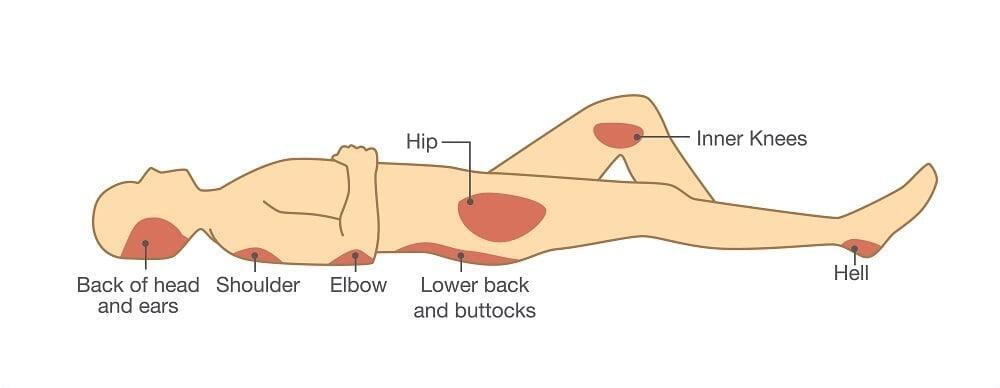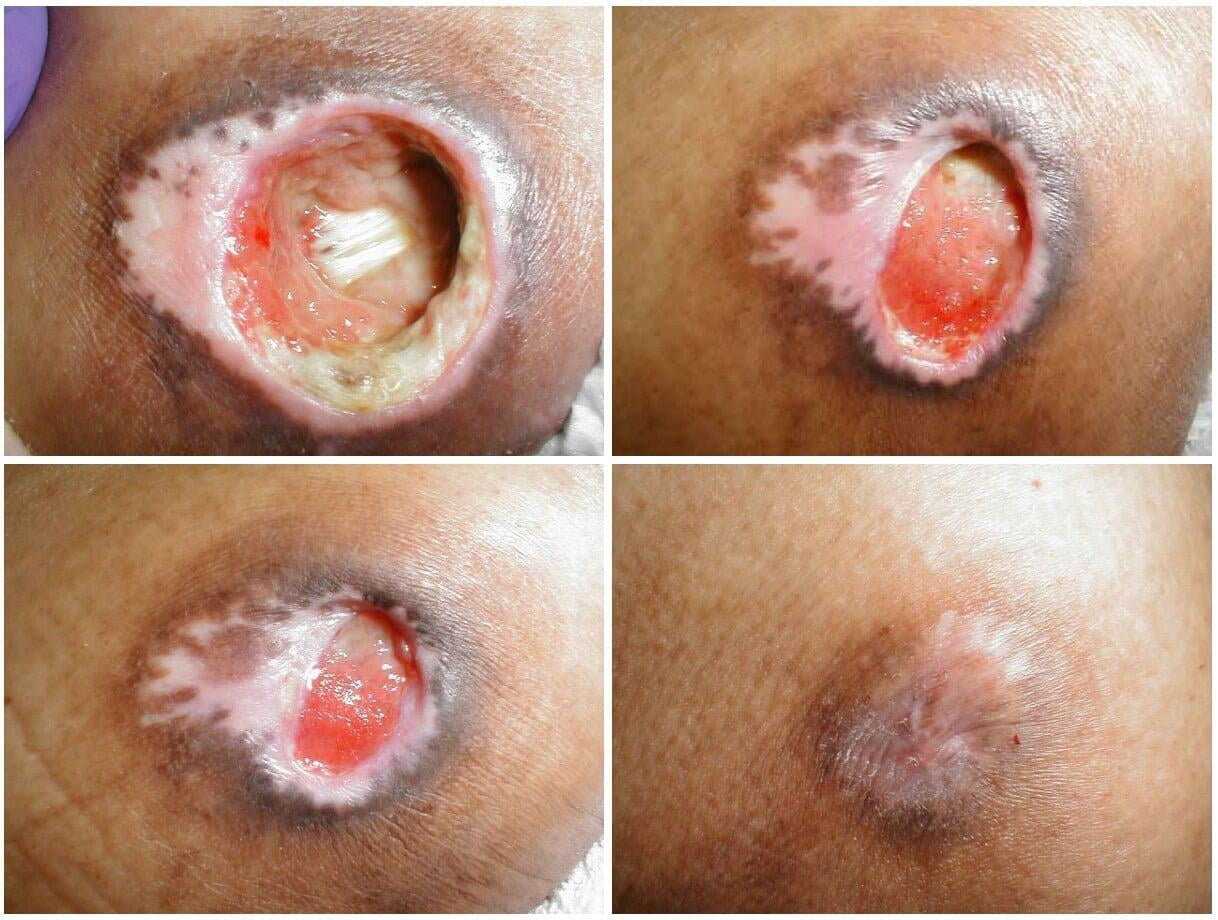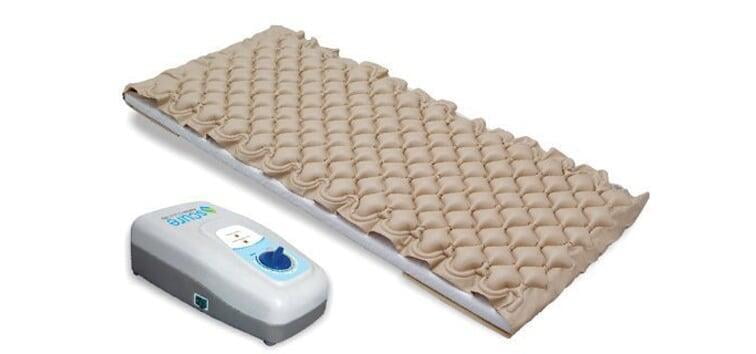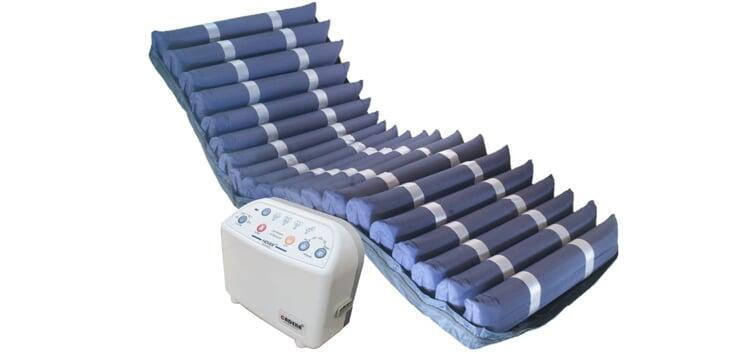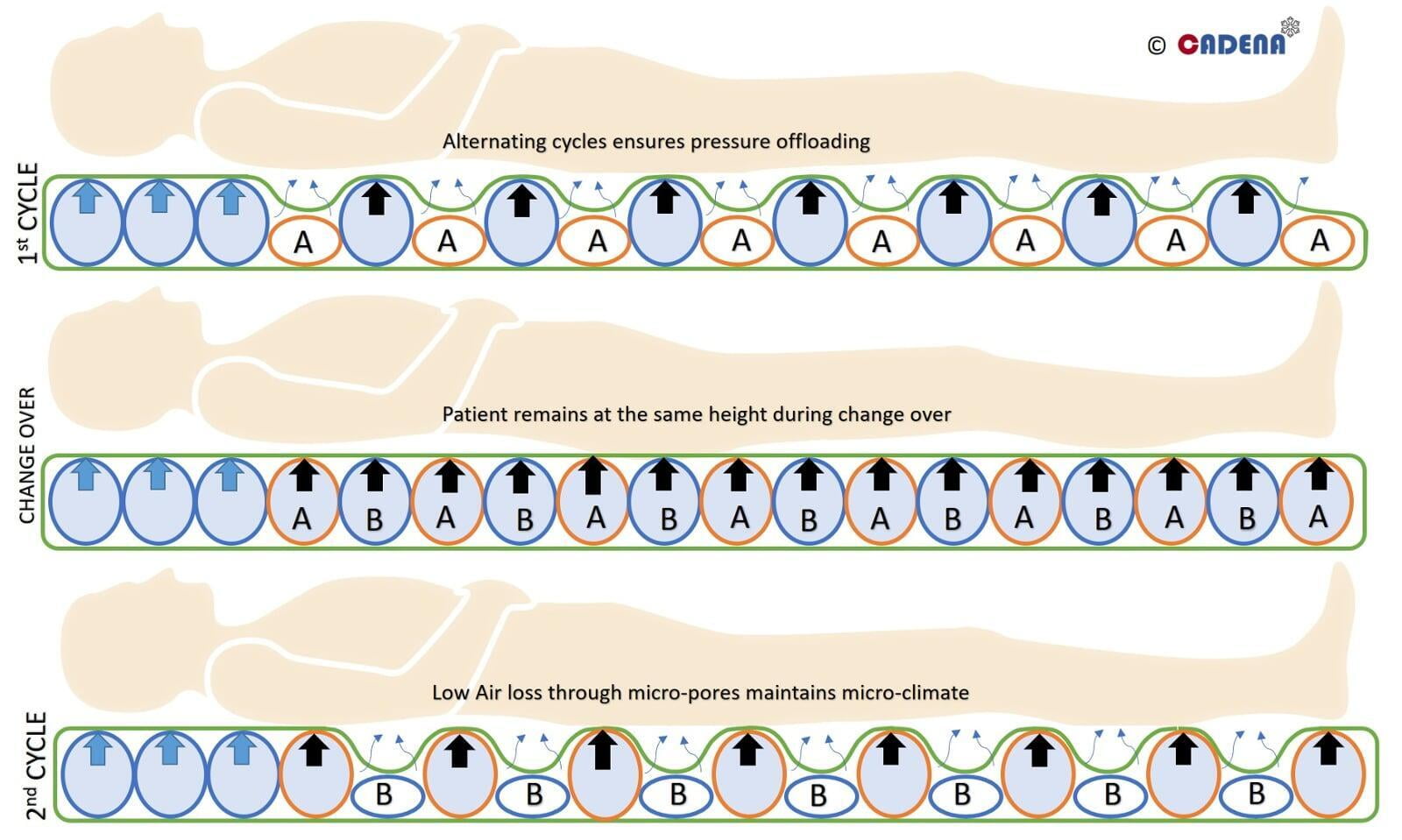Pressure Ulcer
Pressure ulcers, also known as decubitus sores or bed sores, are localized injury to the skin and/or underlying tissue usually over a bony prominence, as a result of pressure, or pressure in combination with friction or shear. Three primary contributing factors for bedsores are:
Pressure - Constant pressure on any part of your body can lessen the blood flow to tissues. Blood flow is essential for delivering oxygen and other nutrients to tissues. Without these essential nutrients, skin and nearby tissues are damaged and might eventually die.
Friction - Friction occurs when the skin rubs against clothing or bedding. It can make fragile skin more vulnerable to injury, especially if the skin is also moist.
- Shear - Shear occurs when two surfaces move in the opposite direction. For example, when a bed is elevated at the head, you can slide down in bed. As the tailbone moves down, the skin over the bone might stay in place — essentially pulling in the opposite direction.
Commonly affected area
The most common sites are the skin overlying the sacrum, coccyx, heels, and hips, though other sites can be affected, such as the elbows, knees, ankles, back of shoulders, or the back of the cranium.
Stages of pressure ulcer
Risk factors
- Pressure Ulcers develop primarily in elderly patients.
- The likelihood of developing ulcer is directly proportional to the duration of hospitalization in intensive / critical care unit.
- Lack of pain perception, natural thinness and weight loss leading to aging skin, malnutrition, urinary or fecal incontinence are a few other major risk factors.
Complications
- Cellulitis
- Bone and joint infections
- Sepsis
- Cancer
Treatment can be expensive and healing is never perfect
Treating bedsores can be challenging and should be initiated after comprehensive skin and tissue assessment.
Although it may take some time, most stage I and stage II sores will heal within weeks with conservative measures.
Stage III and Stage IV wounds, which are less likely to resolve on their own, may require a multi-disciplinary approach, even surgery.
Prevention is better than cure
- Changing position often : Avoid positioning the individual on an area of erythema whenever possible. Follow the schedule for turning and repositioning — approximately every 15 minutes if in a wheelchair and at least once every two hours when in bed.
- Maintain microclimate : Keep the affected area clean and dry. Do not massage or vigorously rub skin. Avoid applying any heated surface directly on the skin surface or pressure ulcers. Do not massage or vigorously rub skin that is at risk of pressure ulcers.
- Nutrition : A healthy diet is important in preventing skin breakdown and in aiding wound healing. Offer fortified foods and/or high calorie, high protein oral nutritional supplements between meals if nutritional requirements cannot be achieved by dietary intake.
- Use support surfaces :These are special cushions, pads, mattresses and beds that relieve pressure on an existing sore and help protect vulnerable areas from further breakdown. Using an anti-decubitus mattress as overlay (on top of exiting mattress) or replacement (using the mattress independently) has been found as an effective way to combat pressure ulcers.
Continuous Low Pressure Mattress (CLPM) : Non Powered Reactive Therapy
Foam Mattress
Mattresses in polyurethane foam, to be used in place of or in addition to the “common” mattress, allow optimum ventilation between the mattress and the patient. Their distinguishing features include the possibility to provide different densities in the head, trunk-pelvis and feet areas, responding to the specific demands of comfort, support and prevention of bedsores.
Filled Mattress
Mattresses filled with Silicon fiber, beads, static air, water or gel are an excellent solution for the prevention of decubitus sores. The main property of these filling is its resilience and therefore its ability to return to the original shape even after significant stress or pressure, thereby maintaining its durable softness and elasticity.
Alternating Pressure Air Mattress (APAM) : Powered Active Therapy
Bubble Mattress
Air-bubble mattresses that are placed on top of the traditional mattress, are recommended only for prevention of stage I decubitus sores. When connected to a compressor they are inflated and deflated alternately and can perform a delicate massaging. These mattress are primarily for home use.
Interchangeable Element Mattress
Mattresses with interchangeable elements may correspond to the specific needs of prevention and treatment of decubitus sores of stages II, III and IV, in the event of long-term therapy in hospital or home. Coupled with a high tech controller, these mattress can perform a variety of therapeutic activities.
Numerous studies have shown that Alternating Pressure Air Mattress (APAM) is more clinically effective than Continuous Low Pressure Mattress(CLPM) [7]
Trails conducted by NICE have shown that APAMs are 2.6 times more effective in reducing incidents of pressure ulcer compared to CLPM.
APAM has a delayed formation of pressure ulcers, which result in reduced hospital stays when used, as compared to CLPM.
APAM is particularly important to prevent and manage pressure injury for patients who cannot be repositioned frequently, including those treated for intensive care, traction, respiratory, pain, end of life care
Alternates inflation and deflation of cells to constantly change pressure points and promote circulation. A single cell slowly deflates, re-inflates, and then the adjacent cell does the same, slowly, up and down the mattress. The head area of the mattress does not alternate so the patient remains undisturbed during sleep, much like a static pillow. In fact, the patient doesn't really feel the cells alternating at all since the process is slow. The speed at which the alternating process cycles from one end of the mattress to the other end is called cycle time and it can be adjusted or set on most mattress systems. Usually 10 minute cycle time is sufficient.
Pressure mattresses are available in two forms: an overlay system or full replacement system.
- Overlay System- This is a shallow depth mattress, usually 2 to 5 inches in depth, these mattresses designed to be used on existing mattresses.
- Replacement Systems- This pressure relief mattress can only be used as a single unit. Due to their more sophisticated construction and deep air cells, usually 6+ inches, they have greater levels of pressure relief.
Caution !! Understanding the difference between medical mattress types and how they work is only part of the answer to getting the correct mattress system for your particular situation. Consider powered pumps in air flow capability. The higher the air flow, the higher the price tag. The higher air flow means maximum functionality. Low performing pumps, 5-10 Liters Per Minute pumps, are a good preventive tool for patients with good skin condition and you want to keep it that way. Such lower performing pumps in the 5-10 LPM range are not suited to healing existing skin breakdown. Be sure to look at the "LPM" rating for each mattress system. High LPM rated pumps, 20 - 25 LPM pumps, provide effective offloading and can treat higher stages of pressure ulcer.
Low Air Loss (LAL) : Tiny laser made air holes in the mattress top surface continually blow out air causing the patient to float. This is the preferred method of treatment (and prevention) of skin ulcers. It is an excellent way of reducing skin interface pressure at the mattress surface. Moisture is wicked away so the patient stays dry.
Combination of low-air-loss (LAL) and Alternating Pressure Air Mattress (APAM) systems have an alternating pressure base with a low-air-loss top cover. In order for this type of mattress to be capable of supplying true low-air-loss it must use a high powered pump. Higher powered pumps and blowers are required to attain True-Low-Air Loss.
References
1. https://www.physio-pedia.com/Pressure_Ulcers
2. https://www.mayoclinic.org/diseases-conditions/bed-sores/symptoms-causes/syc-20355893
3. https://en.wikipedia.org/wiki/Pressure_ulcer
4. Optimizing & measuring outcomes in pressure ulcer prevention and management - Arjohuntleigh Clinical Evidence Issue 6
5. Prevention and Treatment of Pressure Ulcers: Quick Reference Guide ; ISBN-10: 0-9579343-6-X © NPUAP/EPUAP/PPPIA
6. https://magazine.morettispa.com/en/how-do-you-choose-the-right-anti-decubitus-mattress/
7. 2018 surveillance of pressure ulcers: prevention and management (NICE guideline CG179)
8. https://www.phc-online.com/About_Therapy_Mattress_s/25470.htm
